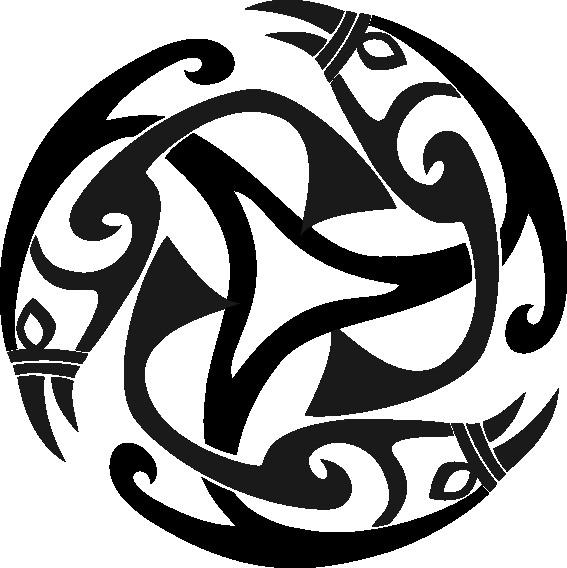-
Posts
1,090 -
Joined
-
Last visited
Content Type
Profiles
Forums
Events
Blogs
Gallery
Everything posted by DJole
-
I have these plans saved on my computer: Stitching Horse Plan.pdf
-
I love that eyeball! You really knocked that one out of the park.
-

I made a braided shopper bag
DJole replied to Hahn's topic in Purses, Wallets, Belts and Miscellaneous Pocket Items
You always do lovely work, with careful attention to detail! That's a nice design, too. Good clean lines with some subtle accents. I think attaching the cloth liner to a leather band, and then attaching that to the bag itself, is a great solution to the problem of how to get that liner to fit. That's a much simpler solution than the one I decided on the last time I made a bag! I wish I had known of your shop when I was in Korea a couple years ago; we were staying in Itaewon just below the Grand Hyatt hotel, not far from your shop!- 15 replies
-
- shopperbag
- braiding
-
(and 1 more)
Tagged with:
-

Turks head knot - determining width and length
DJole replied to Carl513's topic in How Do I Do That?
Welcome to the forum! Can you supply an image of the kind of Turk's head you are trying to do? (They come in different sizes) -

Finished Sheath for Customer!
DJole replied to YinTx's topic in Gun Holsters, Rifle Slings and Knife Sheathes
A nice design, with those lovely curves and good coloring. Those are small stitches! What's the Stitch per inch size here, and what thread size/type?- 36 replies
-
Nice work! Custom dice cups rock the gaming tables... I did something similar some years back, in a larger size, and using a (not very skillful) butt stitch: http://djole.altervista.org/djole/Publications/Leather/TomsTower/TomDragon.htm
-

How to maintain natural leather tones with basket stamping
DJole replied to calibre's topic in How Do I Do That?
So you want the color to stay in the "valleys" of the stamping and the "peaks" to be a natural tone? I believe the way to do this is to learn how to carefully wipe with a flat item, one that will remain stiff and not conform to the patterns and dip down into the valleys. Now, that's the theory -- hopefully somebody who has actually done this (which I vaguely remember reading about). I bet this will require practicing on scrap pieces with this basket weave pattern. -
A nice case! The instrument should be proud to live in a case like that.
-
Maybe this fellow who posted here back in December can be your new hire: Posted December 10, 2018 I’m a leatherworker, i’m living in Viet Nam I have 4 years experience I can do any step for high quality product, design, handcutting, carving, dyeing, stitching.... I’m looking for job at somewhere speak English (US, Australia, Canada....) My email: ducduyqn79@yahoo.com You can search my Facebook by my phone number: +84903651030 My Instagram: tum_leather https://uphinhnhanh.com/image/Cf9sYd https://uphinhnhanh.com/image/Cf9yhG Some of my product: https://uphinhnhanh.com/image/CkCtlz https://uphinhnhanh.com/image/CkC2No https://uphinhnhanh.com/image/CkSPq4
- 5 replies
-
- wallets
- cardholders
-
(and 2 more)
Tagged with:
-

Help needed, my leather wouldnt harden :(
DJole replied to Suntailhawk's topic in Historical Reenactment
Why does your LARP group demand that you use leather, and not foam or plastic? If you're actually going to do combat LARP in that costume, you may find those shoulder pieces (pauldrons, sort of?), as designed on the character, ineffective: 1) A hit downwards on those sticking-out pointed shoulders will put a LOT of stress on whatever is used to attach it to the rest of the armor. They stick out so far that it would be very difficult to prevent any hits to them. 2) A hit sideways onto the shoulder bits is going to be guided straight into that un-armored bicep, or maybe the hit will pop the shoulder piece up to smack you in the side of the head. 3) If the arms are extended to the front, the shoulder pieces don't seem to be designed to turn 90 degrees to the front. Thus, if you arms are reaching out to the front, and you get hit on the shoulder piece, that will drive the edge of the armor into your arm. Depending on your weapon rules, that might hurt more than you want. (Leather should just give you a welt or a bruise, but you wouldn't want that with metal!) 4) Your LARP group (like most) may disallow hand shots, but those wrist bones are sensitive and tender, and getting a smack there might ruin your day. Plus, those "gauntlets" would dig into the wrist as you moved your hands, causing contusions and scrapes. Not very comfortable! -

Help needed, my leather wouldnt harden :(
DJole replied to Suntailhawk's topic in Historical Reenactment
Ah, yes, I've struggled a bit with this, too-- water hardening is often a hit or miss process that I spent a while playing with. So you got one test piece to work, and the next piece didn't -- was that a piece from the same hide? Everything you mentioned above shows you did your homework-- but leather hardening seems much less a replicable science than a dicey art. The type of hide may make a difference, too: belly or shoulder or sides have different characteristics, and the same hide can vary, depending on which edge of the side the leather comes from. I've tried some with bellies, and they just don't harden well. I've had better luck with a side, but even then it's difficult to keep the dimensions intact (due to uneven stretching). -
Not all designs need the ability to draw and sketch. If you can transfer a design that somebody else drew onto the leather, then the expertise comes in figuring out how to replicate that in leather. Some people do amazing, nearly photo-realistic work from drawings, using figure carving techniques to blend and shade. Others of us choose to do things like line drawings (or wood cut block printing), which work well on leather. I have some examples of this on my website: Serpent box <http://djole.altervista.org/djole/Publications/Leather/SerpentBox/SerpentBox.htm> Boar elbow guards <http://djole.altervista.org/djole/Publications/Leather/BoarElbow/BoarElbow.htm> Nativity panel <http://djole.altervista.org/djole/Publications/Leather/NativityPix/LeatherNativity.htm> Comet pouch <http://djole.altervista.org/djole/Publications/Leather/Pouch/CometPouch-1.htm> Dragon box <http://djole.altervista.org/djole/Publications/Leather/TomsTower/TomDragon.htm> As you can see, the lines are copied, but then the art is learning how to work those lines into the 3-d medium of leather, to get that dimensional look and feel.
-
I always have to remind myself that paper is flat, and leather is not, so you have to take the thickness of the leather into account. If you've done that, you're ahead of the game!
- 22 replies
-
That's a nice introductory story! Welcome to the forum; lots of friendly people with lots of leather experience hang out here, and perhaps you can learn better techniques than cussing at the leather!
-

Looking for help with a nicked V gouge
DJole replied to SilverForgeStudio's topic in How Do I Do That?
Where did you get this from? a place like Harbor Freight? I've seen leather tools there before, and they are worth less than what one would pay for them there. -
you might give Inkscape a try. It's free: https://inkscape.org/ Inkscape is professional quality vector graphics software which runs on Linux, Mac OS X and Windows desktop computers.
-
dog collars?
-
I enjoyed watching the time lapse video, paying attention to each step, then pausing the video and thinking about which tools and which techniques had just been used. The end result is a very nice piece of artwork.
-
Cheese...I think they are made out of cheese! They do indeed have genuine leather, but it's just a thin cosmetic layer to hide the cheese.
-

Male Nightingale Armor Skyrim - WIP
DJole replied to PerniciousDuke's topic in Historical Reenactment
Good call with the bone folder! -
Nice work for the first project! You might need to polish your chisels to help them slide through the leather better. I did this to my Tandy diamond chisels and it did make a difference. My JapanGoods stitching chisels don't need it.
-

Basic items needed for leather work .
DJole replied to MilitaryCollector's topic in How Do I Do That?
Check out Ian Atkinson's videos-- he does a great job of addressing this question: Beginners’ Videos Top 25 Recommended Leatherwork Tools (45 mins) The Tools You Need for Leatherwork (15 mins) The Hardware You Need for Leatherwork (30 mins) Information About Dyeing Leather (45 mins) Choosing the right type, weight and quality of leather for your projects (35 mins) Hand Stitching Leather (1 hour 35 mins) Videos here===> <http://ianatkinson.net/leather/videos.htm> Now, if you're looking at learning tooling, that's a different set of skills. -
What YinTx wrote-- ditto for me. Also, use cheaper leather for learning and practicing things. Once you have a technique down, you are less likely to ruin a more expensive piece.
-

Male Nightingale Armor Skyrim - WIP
DJole replied to PerniciousDuke's topic in Historical Reenactment
Keep the build-in-progress reports coming-- you never know when somebody else will want to do the same thing and find your experiences valuable. Let's see the coolness happen, step by step!


